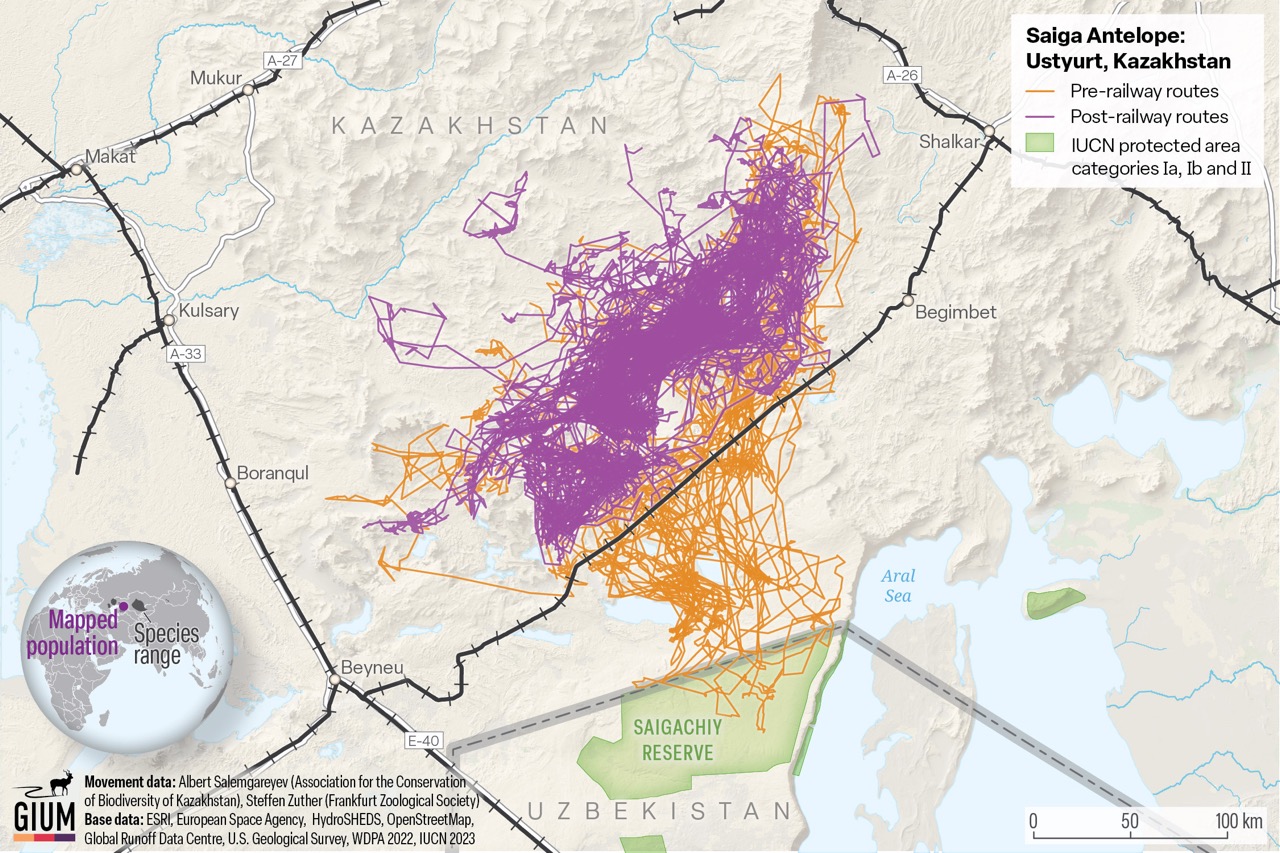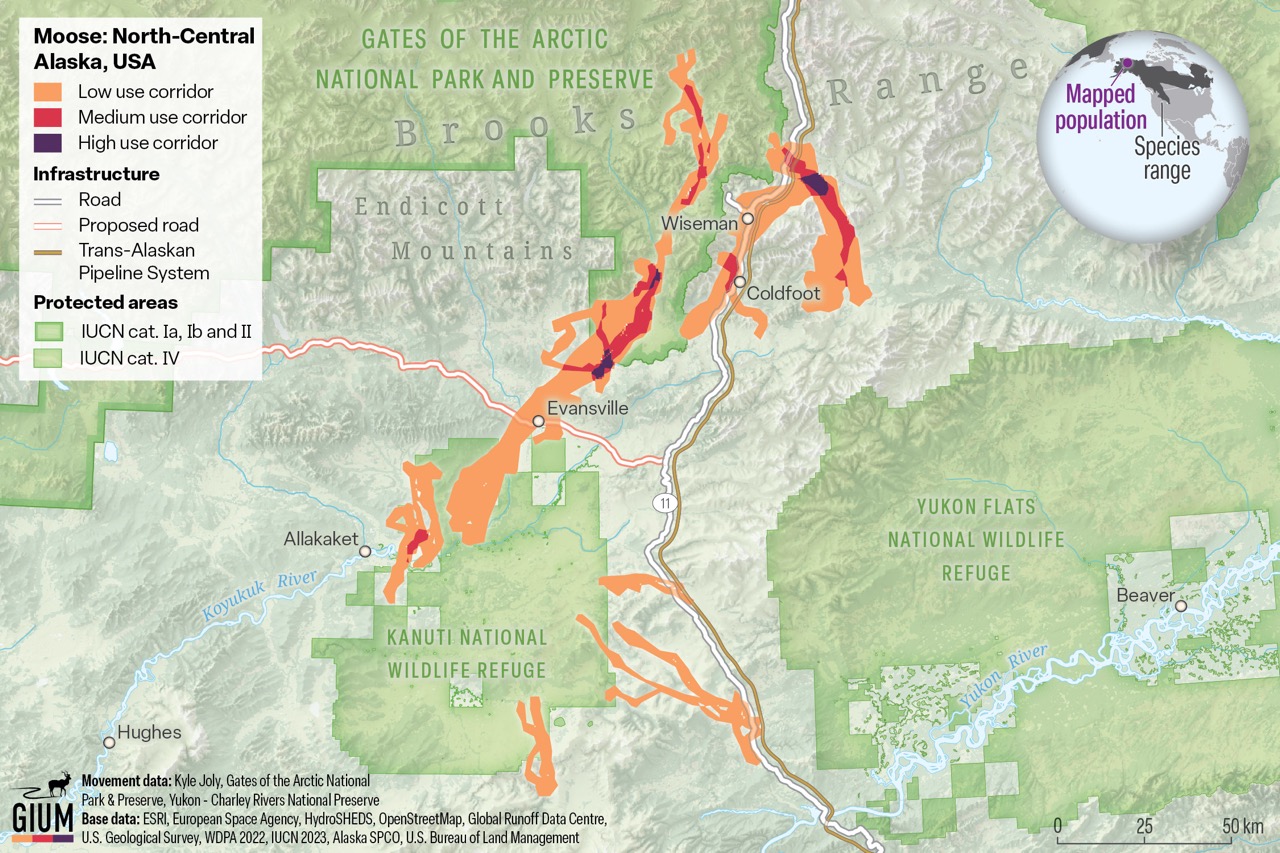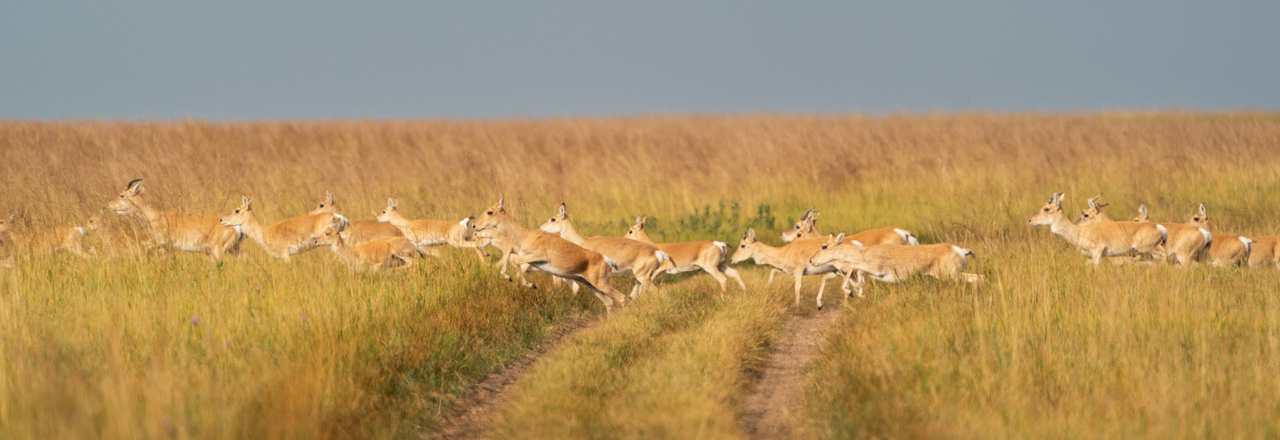New UN Atlas of Migration: Mapping the epic journeys of large mammals worldwide
In a groundbreaking effort to protect the world’s wildlife, the United Nations has launched an interactive online map showcasing the migration paths of large land mammals. This first-of-its-kind tool was developed by an international team of over 80 scientists, collaborating to create an accessible and scientifically backed map that tracks the movements of hooved mammals such as antelopes, guanacos, and zebras. These animals, collectively known as ungulates, often travel vast distances at different times of the year, and now their routes can be tracked in real-time.
.jpg)
Caribou migration. Image credit: Joëlle Taillon
The new Atlas of Ungulate Migration uses the latest research to provide detailed, up-to-date migration maps. This tool not only serves as a rich source of scientific data but also has the potential to inform conservation strategies, infrastructure development, and policies aimed at enhancing ecological connectivity. The map currently tracks 20 global ungulate populations, from the iconic Serengeti wildebeest and African elephants to the saiga of Central Asia.

Movement data collected before and after the construction of a new railway across the Ustyurt saiga population’s range in 2015 illustrates the dramatic effect linear infrastructure can have on wide ranging species like the saiga. GIUM is working to reveal the impact of infrastructure on migratory ungulates like saiga, and use data to guide effective mitigation.

The Arctic is a highly fragile ecosystem, where energy development and climate change threaten migratory ungulates like moose and caribou. Tracking data can allow developers to pinpoint exactly where conservation measures are needed even amidst rapid development and GIUM aims to make more of these critical migration corridors available.
A collaborative international effort
The atlas was developed under the Convention on the Conservation of Migratory Species of Wild Animals (CMS), a biodiversity treaty of the United Nations. The Global Initiative for Ungulate Migration (GIUM), established in 2020, spearheaded the project, bringing together scientists and institutions from around the world. By analyzing tracking data, they produced a digital atlas that will be made freely available to governments, conservationists, and the public.

Mongolian gazelle. Image credit: Thomas Mueller
Protecting ungulate migrations
Ungulates such as Argentine guanacos, Alpine ibex, and Mongolian gazelles traverse vast distances in search of food, to escape harsh weather, or to raise their young. Ensuring that these migrations continue uninterrupted is crucial for the survival of these species.
By offering visibility into these migration patterns, the atlas aims to play a critical role in global conservation efforts, giving governments and communities the information they need to protect these vital species.
Explore the Atlas%20(1).jpg?auto=compress%2Cformat&w=1440)

%2C%20crossing%20a%20marsh%20area%2C%20flying%20Cattle%20Egrets%20(Bubulcus%20ibis)%2C%20Okavango%20Delta%2C%20Botswana%2C%20Africa%20-%20Depositphotos_339585504_XL%20(1).jpg?auto=compress%2Cformat&h=600&w=600)

